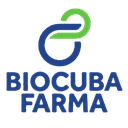Executive Secretary

IX Conferencia Científica Internacional sobre Desarrollo Agropecuario y Sostenibilidad
X Simposio de Medicina Veterinaria y Zootecnia

Resumen
Abstract
Two systems aimed at evaluating the biosafety status of pig farms in Cuba were compared; the Biosafety Resolution 9/08 and the Biocheck.UGent™, with the aim of verifying which is the most effective in our breeding conditions. Surveys were applied to 27 farms, belonging to both the state sector and private agreements, evaluating their internal and external biosecurity using weighted scoring systems and then averaging the results to calculate the level of general biosecurity of each farm. After this evaluation, it was verified by both methods that 75% of the farms evaluated were unprotected, and by the Biocheck method, the result was that 80% of the farms showed problems in internal biosecurity, with risks that could compromise the state. health of the herd and the personnel who work directly with the animals. Based on the results obtained, it was possible to conclude that in our breeding conditions, despite the fact that the Cuban Standard 9/08 is the one that has always been used for biosafety evaluations in intensive pig farming in the country with the Biocheck.UGent™ Risks that went unnoticed were identified, since being a mixed method (quantitative and qualitative) it covers aspects that cannot be measured with the quantitative method (Cuban Standard 9/08), leading to some farms being protected when in fact when As the evaluation deepens, we verify that they are unprotected, and even with risks that in the short or long term can compromise the state of health of the herd and the personnel that interacts with it.
Sobre el ponente

Haylen Oliva Bello

Discussion

